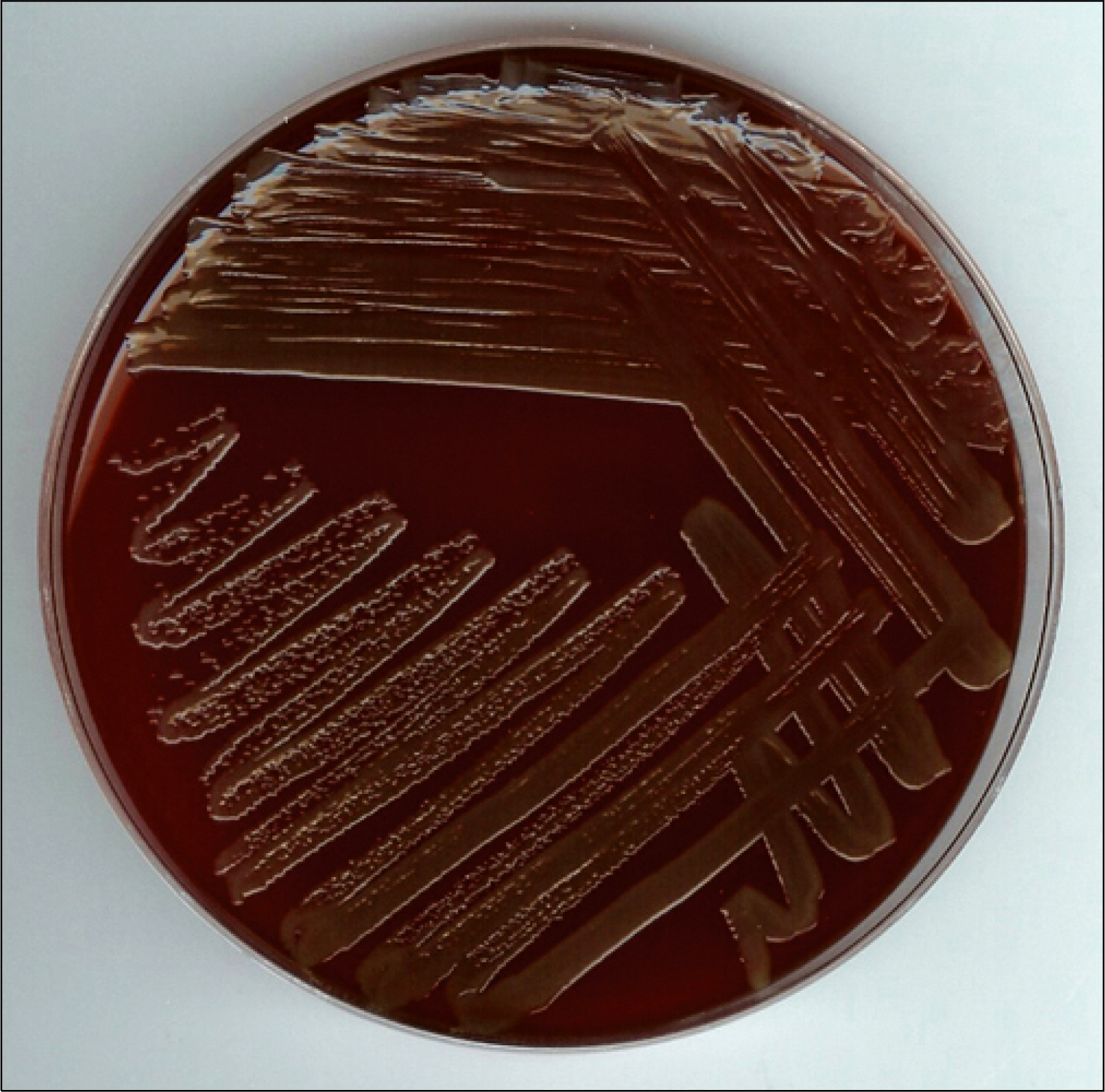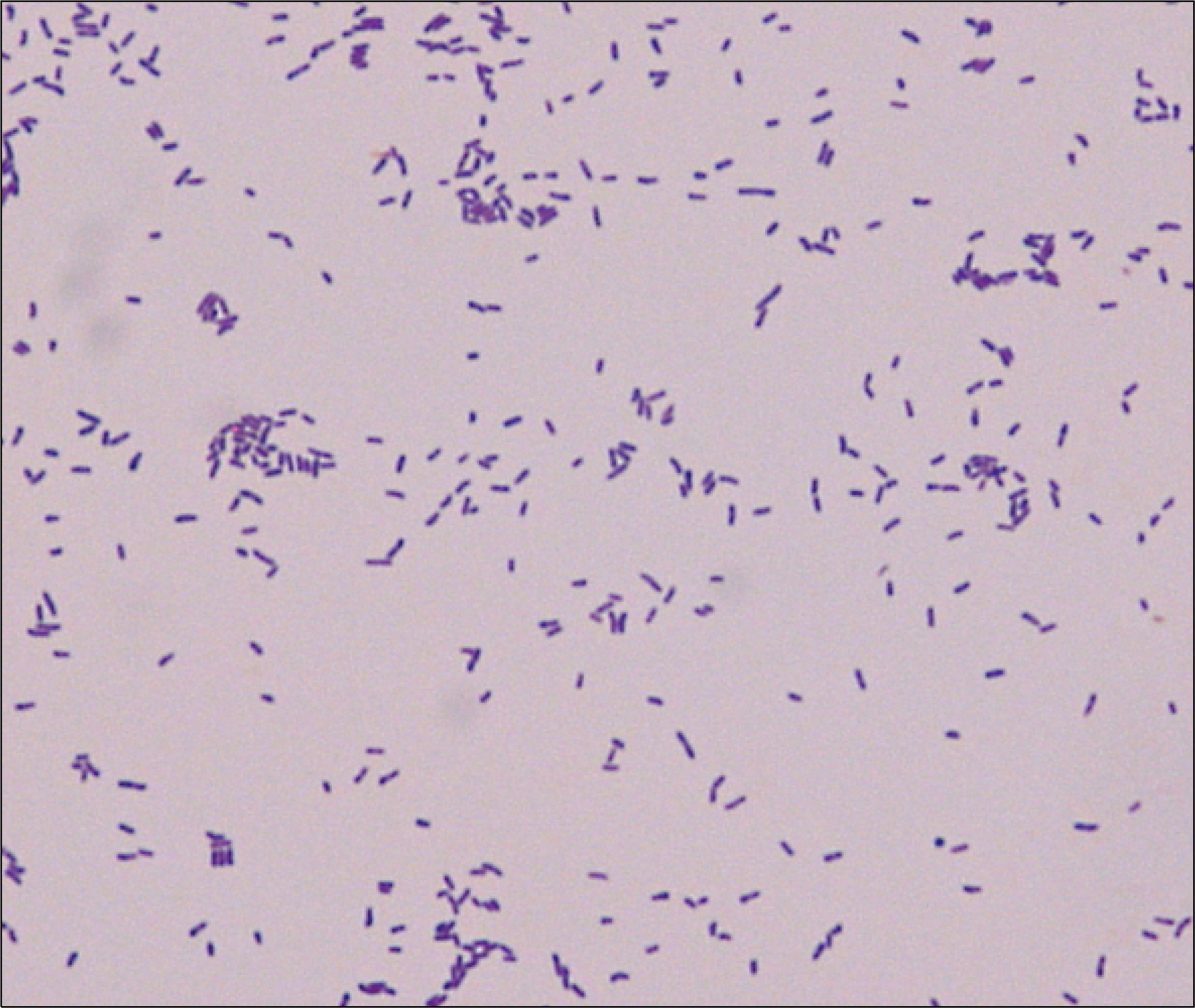Korean J Clin Microbiol.
2010 Dec;13(4):173-177. 10.5145/KJCM.2010.13.4.173.
Catheter-related Bacteremia due to Microbacterium oxydans Identified by 16S rRNA Sequencing Analysis and Biochemical Characteristics
- Affiliations
-
- 1Department of Laboratory Medicine & Genetics, Samsung Medical Center, Sungkyunkwan University School of Medicine, Seoul, Korea. micro.lee@samsung.com
- KMID: 1461613
- DOI: http://doi.org/10.5145/KJCM.2010.13.4.173
Abstract
- Microbacterium oxydans, a coryneform gram-positive bacillus, have been isolated from a wide variety of environmental sources and reported its pathogenic potential with increasing frequency in the last few years. Microbacterium comprises more than 60 species. 16S rRNA sequences in different Microbacterium species are highly conserved and the differences of biochemical characteristics between several species are unclear. As a result, identification of Microbacterium to species level has been difficult in most clinical microbiology laboratories. In this article, we report a case of catheter-related bacteremia caused by M. oxydans that was identified by 16S rRNA sequencing analysis and phenotypic characteristics in patient with diffuse large B-cell lymphoma.
Keyword
MeSH Terms
Figure
Reference
-
1. Murray PR, Baron EJ, et al. eds. Manual of Clinical Microbiology. 9th ed.American Society for Microbiology;2006. p. 485–507.2. Funke G, Falsen E, Barreau C. Primary identification of Microbacterium spp. encountered in clinical specimens as CDC coryneform group A-4 and A-5 bacteria. J Clin Microbiol. 1995; 33:188–92.
Article3. Lau SK, Woo PC, Woo GK, Yuen KY. Catheter-related Microbacterium bacteremia identified by 16S rRNA gene sequencing. J Clin Microbiol. 2002; 40:2681–5.4. Kim CH, Jung ES, Han WS, Kim YH, Hwang BY, Jeong HW, et al. A case of native infective endocarditis caused by Microbacterium species. Korean J Med. 2004; 67:S923–6.5. Ko KS, Oh WS, Lee MY, Peck KR, Lee NY, Song JH. A new Microbacterium species isolated from the blood of a patient with fever: Microbacterium pyrexiae sp. nov. Diagn Microbiol Infect Dis. 2007; 57:393–7.
Article6. Laffineur K, Avesani V, Cornu G, Charlier J, Janssens M, Wauters G, et al. Bacteremia due to a novel Microbacterium species in a patient with leukemia and description of Microbacterium parao-xydans sp. nov. J Clin Microbiol. 2003; 41:2242–6.7. Moon CJ, Shin JH, Jeong ES, Kee SJ, Kim SH, Shin MG, et al. Central venous catheter-related Microbacterium bacteremia identified by 16S ribosomal RNA gene sequencing. Korean J Clin Microbiol. 2009; 12:97–101.8. Alonso-Echanove J, Shah SS, Valenti AJ, Dirrigl SN, Carson LA, Arduino MJ, et al. Nosocomial outbreak of Microbacterium species bacteremia among cancer patients. J Infect Dis. 2001; 184:754–60.9. Tang YW, Von Graevenitz A, Waddington MG, Hopkins MK, Smith DH, Li H, et al. Identification of coryneform bacterial isolates by ribosomal DNA sequence analysis. J Clin Microbiol. 2000; 38:1676–8.
Article10. CLSI. Interpretive Criteria for Identification of Bacteria and Fungi by DNA Target Sequencing; Approved Guideline. CLSI document MM18-A. Wayne, PA: Clinical and Laboratory Standard Institute;2008.11. Orla-Jensen S. The Lactic acid Bacteria. Copenhagen; Host and Son. 1919.12. Gneiding K, Frodl R, Funke G. Identities of Microbacterium spp. encountered in human clinical specimens. J Clin Microbiol. 2008; 46:3646–52.13. Funke G, Haase G, Schnitzler N, Schrage N, Reinert RR. Endophthalmitis due to Microbacterium species: case report and review of Microbacterium infections. Clin Infect Dis. 1997; 24:713–6.
Article14. Funke G, Lawson PA, Nolte FS, Weiss N, Collins MD. Aureobacterium resistens sp. nov., exhibiting vancomycin resistance and teicoplanin susceptibility. FEMS Microbiol Lett. 1998; 158:89–93.15. Richert K, Brambilla E, Stackebrandt E. The phylogenetic significance of peptidoglycan types: Molecular analysis of the genera Microbacterium and Aureobacterium based upon sequence comparison of gyrB, rpoB, recA and ppk and 16SrRNA genes. Syst Appl Microbiol. 2007; 30:102–8.
Article
- Full Text Links
- Actions
-
Cited
- CITED
-
- Close
- Share
- Similar articles
-
- A Case of Bacteremia Due to Microbacterium oleivorans Identified by 16S rRNA Sequencing Analysis
- Central Venous Catheter-Related Microbacterium Bacteremia Identified by 16S ribosomal RNA Gene Sequencing
- A Case of Bacteremia Caused by Leuconostoc lactis Identified by 16S rRNA Sequencing
- A Case of Klebsiella pneumoniae Unidentified by Conventional Biochemical Tests
- A Case of Catheter-Related Bacteremia by Arthrobacter woluwensis



